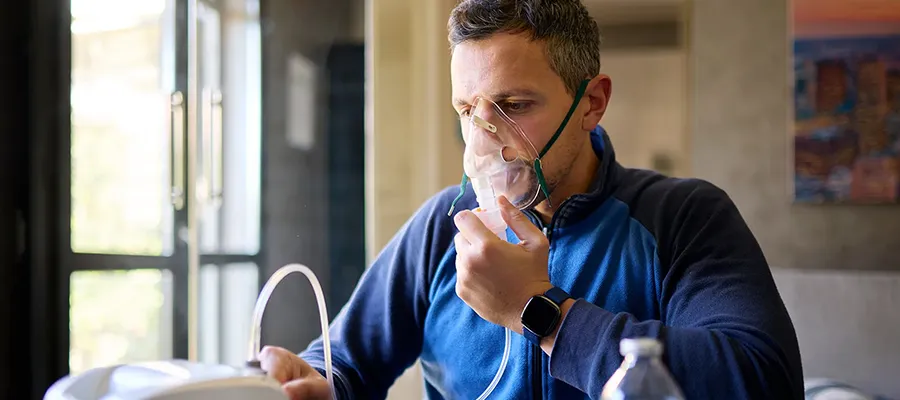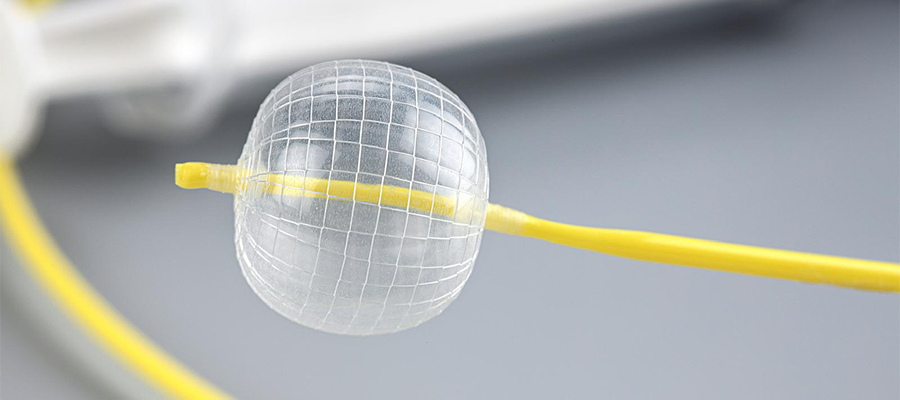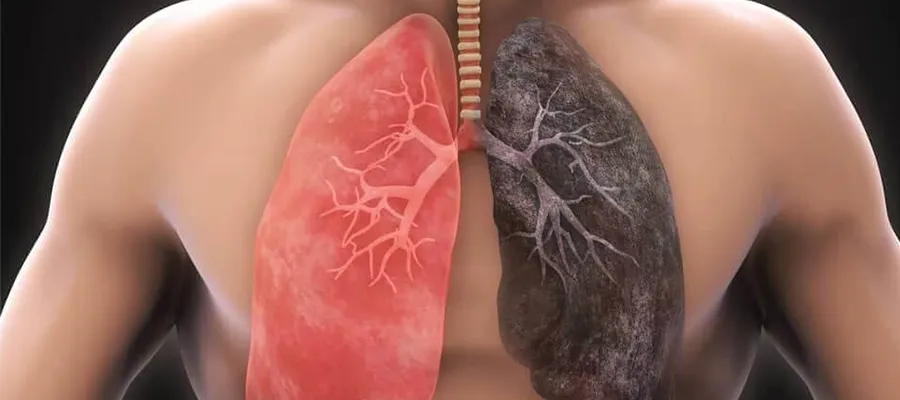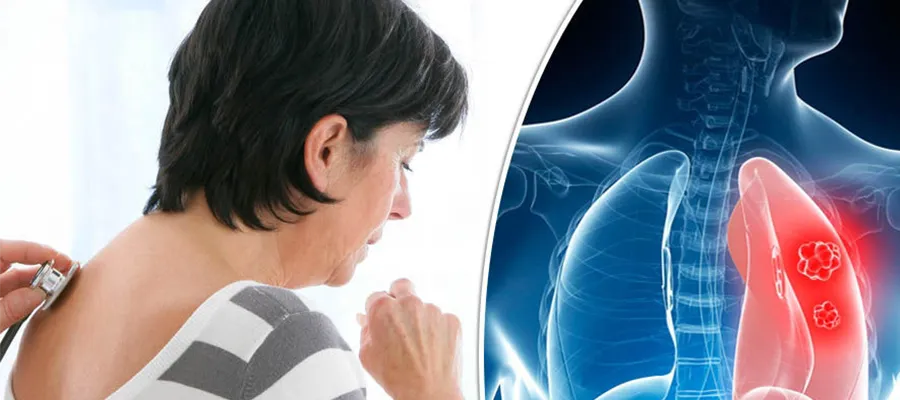What is COPD Balloon Treatment?
COPD Balloon treatment is an interventional treatment method applied with bronchoscopy in order to facilitate breathing by opening the narrowed airways. During this treatment, the narrowed bronchioles are enlarged with a thin catheter with a specially covered balloon at the end called Broncho Mucho Cleaner. The balloon is inflated and deflated in narrow areas, opening the clogged airways. Thus, the passage of air is relieved.
This procedure, which is performed without the need for surgery is generally preferred for patients with chronic bronchitis who do not respond adequately to drugs in the advanced stages of COPD patients.
COPD is a progressive and chronic disease that causes permanent narrowing of the airways. This leads to excessive narrowing in the airways of COPD patients with chronic bronchitis. COPD balloon therapy is a minimally invasive treatment method that aims to facilitate breathing by targeting these problems.
At what stage is COPD Balloon Treatment performed?
COPD Balloon therapy is generally applied to COPD patients with severe chronic bronchitis who do not receive an adequate response to classical treatment methods. This treatment can be applied especially in cases of severe shortness of breath that cannot be controlled with methods such as bronchodilator drugs, corticosteroids, oxygen support and pulmonary rehabilitation programs.
Excessive narrowing occurs in the lung airways of COPD patients. These contractions prevent air passage and affect the quality of life of the patient. COPD balloon treatment aims to restore a more balanced functioning of the lung by interfering with narrowed airways. The suitability of COPD patients for this treatment is determined by experts with detailed examinations.
In which cases is COPD Balloon Treatment applied?
COPD balloon therapy is generally used for patients with advanced emphysema who have not responded adequately to conventional treatment methods. This treatment is particularly useful for severe shortness of breath that cannot be controlled with bronchodilators, corticosteroids, oxygen supplements, and pulmonary rehabilitation programs.
In patients with emphysema, excessive air is trapped in certain areas of the lungs. This trapped air prevents the lungs from expanding and restricts the efficient functioning of healthy areas. COPD balloon therapy aims to restore more balanced lung function by addressing these problematic areas. However, not every COPD patient is a candidate for this treatment. Eligibility is determined by specialists through detailed examinations.
How is COPD Balloon Treatment Applied?
COPD Balloon treatment is an interventional procedure performed under general anesthesia. In this respect, it both increases patient comfort and shortens the recovery time.
The treatment is performed by entering the airways with the help of a bronchoscope with a specially covered balloon catheter called Broncho Muco Cleaner.
This process takes place step by step as follows:
Anesthesia is applied to the patient.
The patient’s airways are visualized with a thin medical device called a bronchoscope with a camera at the end.
Narrowed airways are detected.
The narrowed areas are expanded by entering these airways with a device with a balloon at the end.
The process takes about 120 minutes. The patient is kept under control overnight and is usually discharged the next day.
The aim of the treatment is to increase the functionality of the lung by opening the narrowed airways; in this way, to facilitate the patient’s breathing, increase the capacity of exertion and significantly improve the quality of life.
What are the advantages of COPD Balloon Treatment?
COPD balloon treatment offers significant advantages for patients who do not benefit sufficiently from classic treatment methods. It can provide effective results with a lower risk, especially in individuals who are not suitable for surgical intervention or are at risk of surgery.
The prominent advantages of COPD balloon therapy are:
It does not require surgical incision, it is minimally invasive.
It is applied under general anesthesia.
The application time is short and is usually discharged the next day.
It provides a significant reduction in the patient’s shortness of breath.
An increase in exertion capacity is observed.
A significant increase in daily activities is observed.
It provides a general improvement in quality of life.
Despite these advantages, it should be remembered that it may not be suitable for every patient. Therefore, the detailed examination and evaluation process is of great importance before the procedure.
What Should Be Considered After COPD Balloon Treatment?
There are some important points to consider after treatment. In this process, the doctor’s recommendations should be strictly implemented, and care should be taken for the first few days after leaving the hospital.
Things to consider after COPD balloon treatment:
Heavy physical activities should be avoided for the first 24-48 hours. Then, physical exercises recommended by the doctor should be done.
Conditions such as cough, increased phlegm or shortness of breath should be closely monitored.
Doctor check-ups should be visited regularly, recommended medications should not be interrupted.
The immune system should be supported against the risk of infection.
Smoking Cigarettes and use of tobacco products should definitely be stopped.
The effect of the treatment should be followed with lung function tests.
After this treatment, short-term cough or phlegm increase may be observed in some patients. However, this situation is usually temporary and will return to normal within a few days.
Is COPD Balloon Treatment Applicable to Every COPD Patient?
No, COPD balloon treatment is not suitable for every patient. This treatment gives effective results, especially in types of COPD, called “heterogeneous emphysema”, in which a specific region of the lung is more damaged than others. However, if each region of the lung is equally affected, that is, if there is a “homogeneous emphysema”, this method may not provide the desired benefit.
In addition, balloon treatment can be risky for individuals with severe heart disease, uncontrolled hypertension, active infections, or structural disorders in the bronchi walls. Suitability is determined by a detailed pulmonological evaluation.
Is COPD Balloon Treatment Permanent?
COPD balloon therapy is not a permanent solution, but an effective supportive treatment to improve the quality of life of the patient. The effect of COPD balloon treatment can last between a few months and a few years.
Although the treatment is not permanent, it has a very high satisfaction rate with the conveniences it brings to the patient’s daily life and the increase in the capacity of exertion. At the same time, drug treatments can be more effective during this period, because the airways are opened to make the lung work more efficiently.
Do COPD Symptoms Decrease After Balloon Treatment?
Yes, when applied to the right patient and with the right technique, there may be a significant decrease in symptoms after COPD balloon treatment. These symptoms include:
Shortness of breath
Feeling of tiredness
Difficulty during physical exercises
Constant coughing and expectoration
Most patients state that they breathe easier in the first few weeks after treatment. However, this healing process may vary from person to person and must be evaluated under the control of a specialist.
Asked Questions
Who is not applied to COPD balloon treatment?
COPD Balloon Therapy is not applied in the following cases:
COPD patients with homogeneous emphysema type
Individuals with severe heart failure
Patients with active lung infection
People with bronchial structural disorder.
Patients who are psychologically unable to adapt to treatment
Suitability for treatment is determined as a result of extensive examinations and the decision should be made by an experienced chest specialist.
Can you exercise after COPD balloon treatment?
Yes, but when to start exercising should be determined by the doctor’s recommendation. Usually, rest is recommended for the first few days, then physical activity is gradually increased, starting with light walks. Exercise is important in terms of using lung capacity more efficiently. However, coercive movements should be avoided.
What is the COPD Balloon Treatment Price?
The pricing is determined according to the patient’s hospital preference, since the price of COPD Balloon treatment will vary according to the hospital where the application will be made.








